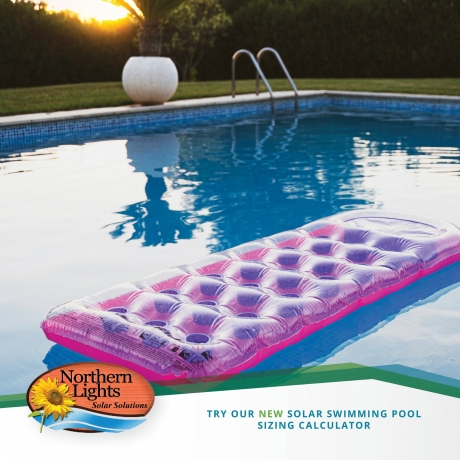Are you deciding whether a solar heater is right for a pool? It involves weighing several important factors like climate, sun exposure, pool size, and installation options. Every element can help you determine whether a solar pool heating system will be effective and economical for a property.
Climate and Solar Resource
To evaluate solar heating feasibility, you need to analyze the local climate. Solar pool heaters work effectively in sunny areas with mild winters. These systems rely on sunlight to generate warmth.
Regions that experience frequent cloud cover, dense shade, or extremely cold temperatures will experience less benefit and require supplementary heating for year-round comfort. If you live in a highly sunny climate, a solar pool heater can significantly extend the swimming season and make the investment much more valuable.
Sun Exposure
Sun exposure is another essential factor that you should consider while checking out solar heaters for a pool. Solar panels need direct sunlight for effective operation, ideally six or more hours per day. You need to evaluate the property for trees, neighboring buildings, or other obstacles that may cast shadows on potential panel locations.
South-facing roofs work best in the Northern Hemisphere for absorbing maximum sunlight. East- or west-facing roofs can work, and east-facing systems provide heat earlier in the day, and west-facing ones later. Minimal shade and a clear “solar window” can provide excellent performance.
Pool Size and System Sizing
The size of the pool significantly affects the number, size, and power of solar collectors required. For most solar applications, the surface area of solar panels should be around 75–100% of the pool surface area. This ensures enough heating power to maintain comfortable swimming temperatures.
Larger or heavily shaded pools may require a greater ratio as sometimes exceeding the pool's surface area, for effective heating. Calculating this ratio can help you determine the investment and space required upfront.
Roof and Ground Mounting
The place to mount the solar panels is another important decision. Roofs are the most common location with sloped, south- or west-facing rooftops providing the best efficiency. The host roof should be large enough, strong enough, and oriented right to support the collectors and related hardware.
Proper planning is essential as there must be adequate setbacks from ridges, edges, and other features to meet local codes and manufacturer requirements. If rooftop space is lacking, ground mounting is another option, especially for larger lots. Ground-mounted systems provide flexibility in orientation and tilt, but they require dedicated open area and protection from accidental damage or shading.
Practical and Local Considerations
Other significant aspects include proximity to the pool, as shorter distances between the panels and the pool reduce heat loss, and compatibility with the pool's filtration and pump system. You should always check local building codes and neighborhood association rules, as these may place limits on system type or placement.
Is Solar Pool Heating Feasible for a Swimming Pool?
Those in sunny climates with good southern exposure, a roof or ground area matching the pool surface, and minimal shading are perfect for solar pool heating. However, a quick site audit by a solar professional can provide specific recommendations and a projected return on investment.
With careful consideration of the above-discussed factors, solar heating can deliver efficient, eco-friendly comfort for the pool. They can extend swim time and boost property value. When seeking solar heaters for pools, you should get in touch with the Northern Lights Solar Tubs team at 1-800-759-8990.






